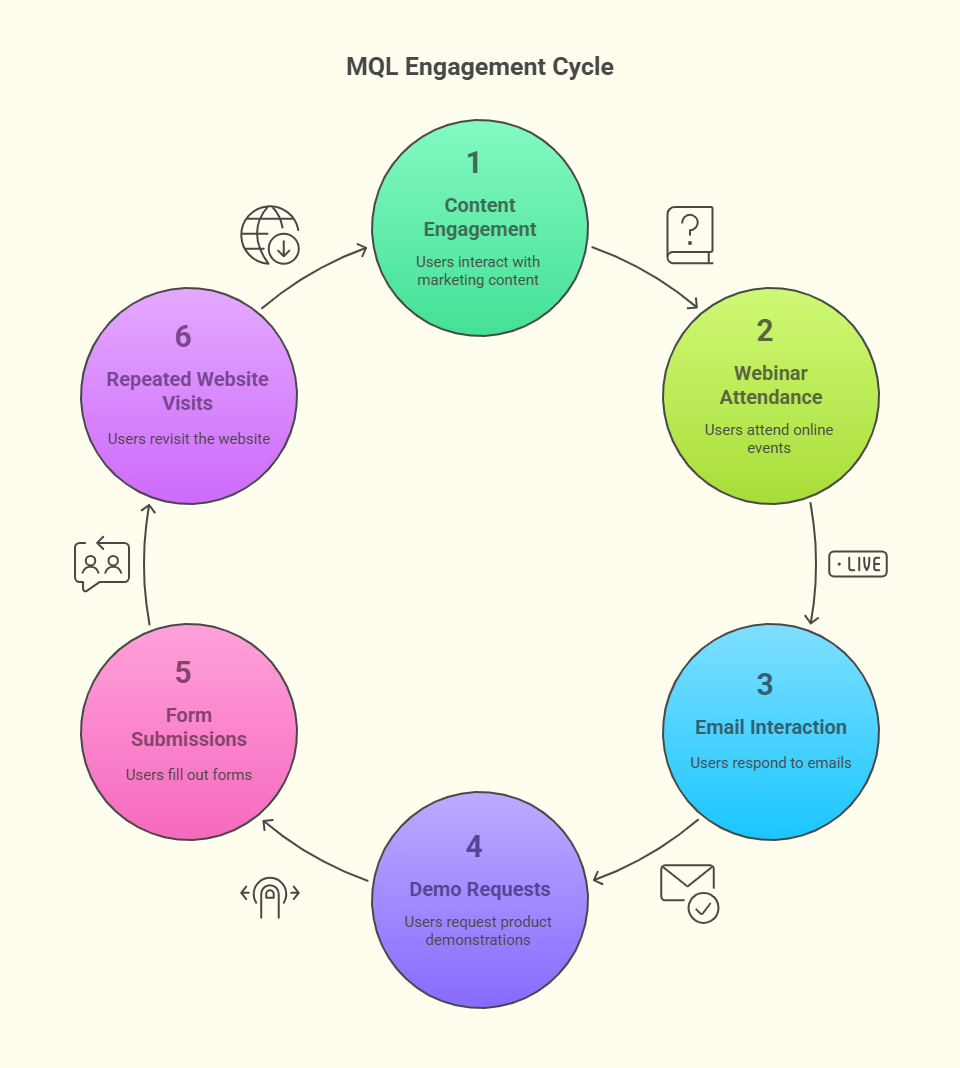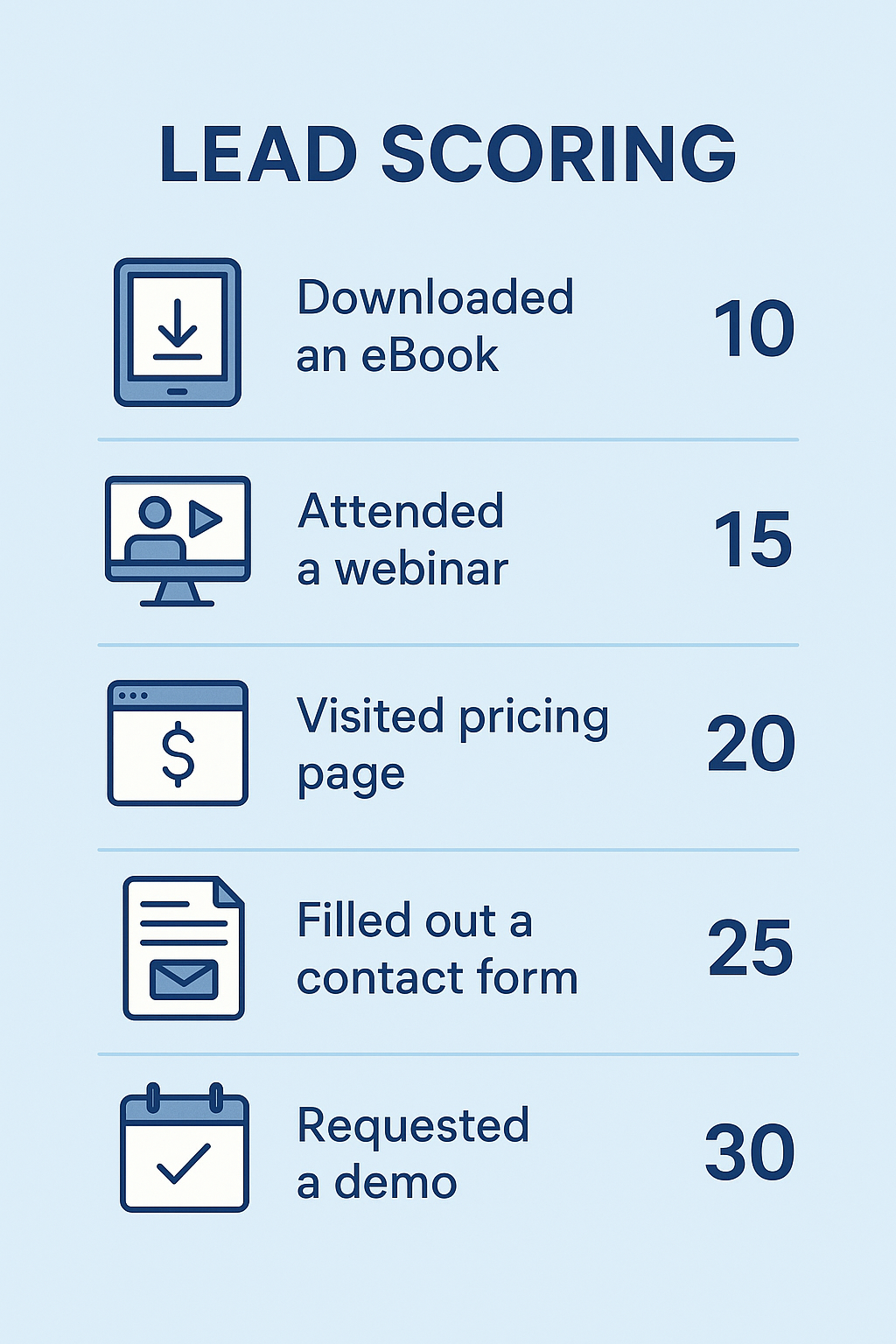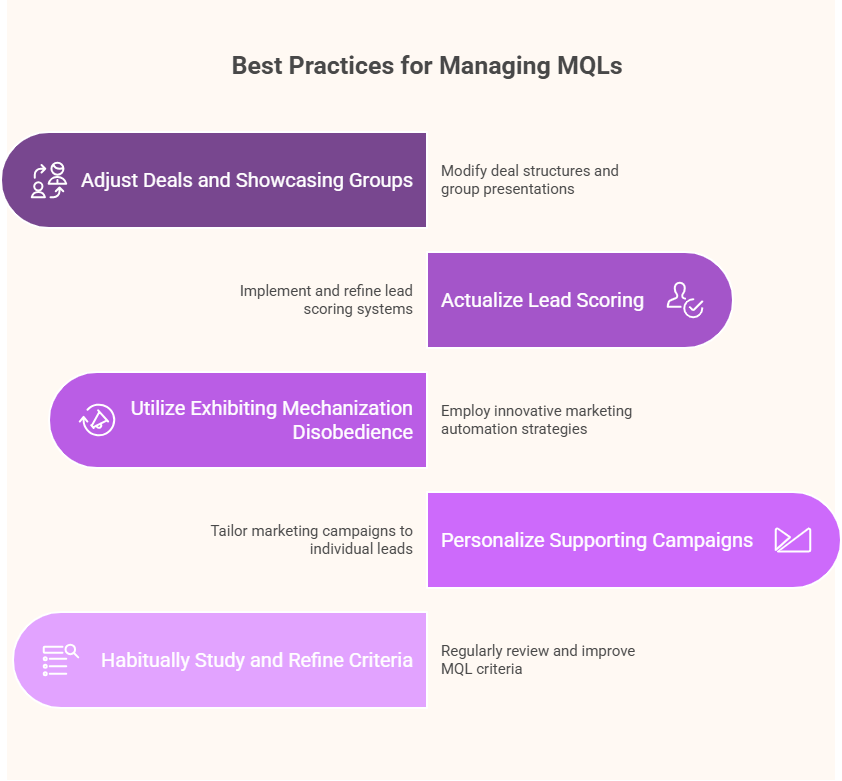
Not every lead is worth chasing—some are just window shoppers, while others are actively looking for what you offer. That’s where Marketing Qualified Leads (MQLs) come in. These are the warm leads that your marketing efforts have nurtured enough to show real interest. But what makes someone an MQL, and how do you know when to pass them to your sales team?
Let’s break it all down in simple, practical terms.
Table of Contents:
- What is a Marketing Qualified Lead (MQL)?
- Why MQLs Matter in Your Sales Funnel?
- Common Actions That Define an MQL
- MQL vs. SQL: What's the Difference?
- How to Identify and Score MQLs?
- Best Practices for Managing MQLs
- Tools to Help Identify and Manage MQLs
- Conclusion
- Marketing Qualified Leads Frequently Ask questions (FAQs)
What is a Marketing Qualified Lead (MQL)?
A Marketing Qualified Lead (MQL) is a potential customer who has shown interest in your product or service through marketing channels and meets specific criteria indicating they’re more likely to become customers than other leads. These criteria are often established through collaboration between marketing and sales teams to ensure alignment on what constitutes a “qualified” lead.
MQLs are identified based on specific behaviors and engagement with your marketing efforts, such as downloading content, attending webinars, or repeatedly visiting your website. These actions suggest that the lead actively seeks information and considers your product or service as a solution to their needs.
Why MQLs Matter in Your Sales Funnel?
Focusing on MQLs allows your marketing and sales teams to prioritize leads that are more likely to convert, making strides in effectiveness and ROI. Recognizing and sustaining MQLs can streamline your deal handling and designate assets more effectively.
According to industry insights, businesses that effectively manage MQLs can experience a significant increase in conversion rates and a reduction in the sales cycle length. This targeted approach ensures that sales teams focus on leads with the highest potential, leading to better outcomes.
Common Actions That Define an MQL
Recognizing MQLs includes following particular behaviors that show intrigued and expectation. Here are a few regular activities which will qualify a lead as an MQL:
- Content Engagement: Downloading eBooks, white papers, or case studies.
- Webinar Attendance: Signing up for and attending webinars or virtual events.
- Email Interaction: Opening emails and clicking on links within them.
- Demo Requests: Requesting a product demo or trial.
- Form Submissions: Filling out contact forms or surveys on your website.
- Repeated Website Visits: Returning to your website multiple times, especially to high-value pages like pricing or product details. Klipfolio
These actions suggest that the lead actively seeks information and considers your product or service as a solution to their needs.

MQL vs. SQL: What's the Difference?
It’s important to distinguish between a Marketing Qualified Lead (MQL) and a Sales Qualified Lead (SQL).
- MQL: A lead that has engaged with marketing efforts and meets predefined criteria indicating potential interest.
- SQL: A lead vetted by the sales team and considered ready for direct sales engagement.
The transition from MQL to SQL involves further qualification, often through direct communication, to assess the lead’s purchase decision readiness.
| Feature/Criteria | Marketing Qualified Lead (MQL) | Sales Qualified Lead (SQL) |
|---|---|---|
| Stage in Buyer’s Journey | Early to mid-stage (Awareness & Consideration) | Later stage (Decision-making) |
| Primary Contact | Marketing team | Sales team |
| Lead Behavior | Engages with marketing content: blog posts, eBooks, webinars, etc. | Requests demos, responds to sales emails, asks for pricing |
| Readiness to Buy | Interested but not yet ready to make a purchase decision | Actively considering a purchase and open to sales conversations |
| Qualification Criteria | Based on engagement metrics (e.g., content downloads, email clicks) | Based on BANT or firmographic fit (budget, authority, need, timeline) |
| Goal of Interaction | Nurture and educate the lead further | Convert lead into a paying customer |
| Conversion Path | Lead nurturing via content, emails, and automated workflows | Personalized outreach, discovery calls, sales meetings |
| Common Tools Used | Marketing automation platforms (e.g., HubSpot, Marketo) | CRM and sales engagement tools (e.g., Salesforce, Outreach) |
| Handoff Point | When lead meets MQL criteria and lead score threshold | After sales team validates the lead’s intent and fit |
How to Identify and Score MQLs?
Identifying MQLs involves tracking specific behaviors that indicate interest and intent. Implementing a lead scoring system can help prioritize leads based on their likelihood to convert. Lead Scoring Example:

Once a lead accumulates a certain number of points, it can be classified as an MQL and passed to the sales team for further engagement.
Best Practices for Managing MQLs
To successfully use MQLs in your promoting technique, consider the taking after best hones:
1. Adjust Deals and Showcasing Groups
Guarantee that both groups concur on the MQL criteria and the method for transitioning leads to deals. Standard communication and shared objectives can improve lead quality and change rates.
2. Actualize Lead Scoring
Designate numerical values to differing lead behaviors and qualities to prioritize leads based on attractiveness. This will help center endeavors on the first promising prospects.
3. Utilize Exhibiting Mechanization Disobedience
Utilize gadgets like HubSpot, Marketo, or Pardot to track leads instinctively, automate supporting campaigns, and manage lead scoring.
4. Personalize Supporting Campaigns
Tailor your substance and communication to address the specific interface and needs of your MQLs. Personalized emails, centered on substance, and noteworthy offers can move leads closer to a purchase choice.
5. Habitually Study and Refine Criteria
Tirelessly assess the adequacy of your MQL criteria and change as required based on altered data and input from the sales team.

Tools to Help Identify and Manage MQLs
Effectively managing Marketing Qualified Leads requires more than just manual tracking—it calls for the right set of tools that can automate, analyze, and optimize every touchpoint in the lead journey.
Here's a more profound see at the finest apparatuses to distinguish, score, and sustain MQLs—plus how PrimeRole fits impeccably into this biological system.
1. PrimeRole—AI-Powered MQL Intelligence Platform
PrimeRole could be a game-changer that distinguishes and qualifies MQLs with exactness. It employs progressive AI and machine learning to: Consequently, qualified leads are based on firmographic, technographic, and behavioral information.
- Score and section leads in real time to prioritize those most likely to change over.
- Enrich lead data from multiple sources, giving you a comprehensive view of each potential buyer.
- Integrate seamlessly with your CRM and marketing automation tools for end-to-end MQL tracking and nurturing.
With real-time cautions and noteworthy bits of knowledge, PrimeRole guarantees no warm leads go unnoticed. It’s particularly profitable for B2B companies looking to streamline their showcasing and deal handoff preparation.

2. CRM Systems (Customer Relationship Management)
CRMs like HubSpot CRM, Salesforce, and Zoho CRM are essential for managing all lead data in one place. They help you:
- Store and organize contacts and interactions.
- Track lead sources and touchpoints.
- Set up pipelines and workflows to move MQLs toward sales.
When integrated with MQL tools like PrimeRole, CRMs become even more powerful by allowing seamless updates and communication between marketing and sales.
3. Marketing Automation Platforms
Platforms like Marketo, Mailchimp, and Pardot help you automate:
- Lead nurturing workflows.
- Email campaigns tailored to lead behavior.
- Trigger-based reactions when clients perform high-intent activities.
These stages guarantee that MQLs remain locked in until they're ready to be assigned to deals, lessening lead spillage and increasing conversion rates.
4. Analytics & Reporting Tools
Understanding how leads are interacting with your content and site is crucial. Tools like:
- Google Analytics helps monitor user behavior and source attribution.
- Tbleau gives you advanced visual reporting on MQL performance and campaign ROI.
- These insights help you refine your content, channels, and messaging to qualify better leads moving forward.
Why PrimeRole Stands Out:
- Unlike siloed tools, PrimeRole is designed to unify multiple functions—lead intelligence, scoring, enrichment, and alerts—under one intuitive platform. Its deep AI integration helps businesses identify and act on MQLs faster, with more accuracy, and in a more personalized way.
- One platform to analyze, qualify, and hand off MQLs efficiently.
- Supports both marketing and sales team alignment.
- Boosts ROI by focusing on the right leads, not just more leads.
Turn Traffic into Marketing Qualified Leads!
Learn how to identify, attract, and nurture MQLs to fuel your sales pipeline and drive higher ROI from your marketing efforts.
Conclusion
Identifying and managing Marketing Qualified Leads (MQLs) is at the heart of building a high-performing lead generation and sales process. By understanding which leads show genuine interest and are most likely to convert, businesses can prioritize their time and resources more effectively. This targeted approach not only increases conversion rates but also reduces wasted efforts, ultimately boosting ROI.
When MQLs are properly recognized and nurtured—using strategic content, timely follow-ups, and smart automation—it creates a seamless journey from interest to intent. This is where having the right tools makes all the difference. Platforms like PrimeRole empower businesses to capture, track, and nurture MQLs with precision. From behavior-based segmentation to lead scoring and email workflows, PrimeRole simplifies how you manage your pipeline and helps you stay focused on leads that actually matter.
In today’s competitive landscape, MQLs aren't just numbers—they're future customers. So, investing in a smarter MQL process isn’t just a nice-to-have, it’s a must for long-term growth. With platforms like PrimeRole in your toolkit, you're better equipped to turn qualified leads into loyal customers, and scale your sales strategy with confidence.
Marketing Qualified Leads Frequently Ask questions (FAQs)
How do I determine the criteria for an MQL?
Collaborate with your sales team to identify behaviors and attributes that indicate a lead's readiness to engage with sales. This may include actions like downloading specific content, attending webinars, or visiting key pages on your website.
Can a lead move back from SQL to MQL?
Yes, if a lead is deemed not ready for sales engagement, they can be returned to marketing for further nurturing until they meet the criteria again.
How often should I review my MQL criteria?
Regularly—at least quarterly—to ensure that your criteria align with current market conditions, buyer behaviors, and sales feedback.
